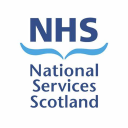- Establish a diagnosis of Diabetes Mellitus.
It is unnecessary if a child has symptoms of diabetes and either a random venous plasma laboratory glucose concentration of 11.1 mmol/L or higher, or a fasting concentration of 7.0 mmol/L or higher. [Definition, Diagnosis and Classification of Diabetes Mellitus. WHO criteria 1999].
Glucose is measured at 0 minutes and 120 minutes only. - Assess Insulin Resistance (see insulin resistance section below).
In addition to the standard procedure glucose and insulin are measured at 0, 30, 60, 90 and 120 minutes. - Assess for Growth Hormone Excess (not specifically covered in this guidance).
Glucose tolerance test

- Do not perform glucose tolerance tests on patients known to be suffering from an infection, patients with uncontrolled thyroid dysfunction, or patients recovering from stress (e.g. surgery) as these alter insulin sensitivity.
- Ensure that the child has had an adequate diet (minimum of 150 grams/day of carbohydrate) for at least 5 days before the test.
- Fast the patient overnight (4 hours for infants) but avoid more prolonged fasting. Drinks of water only (no sweet drinks) are allowed during this period.
- The child should not have had any breakfast on the day of the test.
Drug(s) given
Glucose monohydrate by mouth. Dose according to body weight, 1.925gm per kg body weight (not exceeding 82.5 gm, equivalent to 75gm anhydrous glucose, the standard adult dose) Dissolve the dose in 100-200ml of chilled water, flavoured with lemon.
Rapilose OGTT solution can be used as an alternative. It contains 75gm of glucose in 300ml.
How given
Calculate dose of oral glucose up to maximum of 75gm.
Give orally as quickly as possible (over 5-10mins) without causing vomiting.
Timing of administration
After baseline bloods taken.
| Time (minutes) | Action |
| 0 | Insert a reliable cannula Take venous blood sample |
| 0 | Give Oral glucose drink. The drink should be fully consumed in 5 to 10 minutes |
| 120 | Take venous blood sample |
| 30 60 90 | If test is being carried out to investigate Insulin Resistance collect venous blood samples at these additional times |
| Time (minutes) | Standard oral glucose tolerance test |
| 0 | 120 |
| Glucose | Glucose |
| HbA1c | / |
| Time (minutes) | Only if testing for insulin resistance | |||
| 0 | 30 | 60 | 90 | 120 |
| Glucose | Glucose | Glucose | Glucose | Glucose |
| HbA1c | / | / | / | |
| Insulin (not for standard GTT) | Insulin | Insulin | Insulin | Insulin |
WHO Criteria (from the Diagnosis and Classification of Diabetes Mellitus, Expert Committee on the Diagnosis and Classification of Diabetes Mellitus 2003).
- A normal fasting plasma glucose is defined as less than 5.6 mmol/L.
- A normal glucose tolerance is defined by a 2-hour plasma glucose of less than 7.8 mmol/L
Diagnosis of diabetes
Diabetes should be diagnosed only when the 2-hour plasma glucose is 11.1 mmol/L or higher. In patients without symptoms diagnosis should not be based on a single glucose determination. At least one additional glucose test result with a value in the diabetic range is required, either fasting, random or 2 hours after a standard glucose load.
Impaired glucose tolerance
Defined by a fasting plasma glucose of less than 7.0 mmol/L and a 2 hour plasma glucose between 7.8 and 11.1 mmol/L.
Impaired fasting glycaemia
Defined by a fasting plasma glucose between 5.6 and 7.0 mmol/L and a 2 hour plasma glucose concentration of less than 7.8 mmol/L.
Insulin resistance
According to the recent consensus statement there are no clear-cut offs to define insulin resistance in children and surrogate measures such as fasting insulin are not ideal.
(For more info, see Insulin resistance in children: consensus, perspective, and future directions. Levy-Marchal C, et al; Insulin Resistance in Children Consensus Conference Group. J Clin Endocrinol Metab. 2010 Dec; 95(12):5189-98).
Based on current screening criteria and methodology, there is no justification for screening children for insulin resistance related to obesity.
We recommend, in normal individuals:
- Fasting insulin concentration is:
- Less than 10 mU/L in children younger than 10 years of age.
- Less than 20 mU/L in children older than 10 years.
- Peak insulin concentration is less than 100 mU/L.
In mild to moderate insulin resistance:
- Fasting insulin of 20 - 50 mU/L.
- Peak insulin of 100 - 300 mU/L.
In severe insulin resistance:
- Fasting insulin of greater than 50 mU/L.
- Peak insulin of greater than 300 mU/L.
Note conversion:
Insulin in pmol/L x 0.14 = insulin in mU/L
